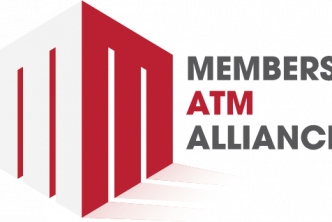By: Kevin Polinsky, Senior Director of Technology, TruStage
What’s one of your least favorite things to do? Go to the dentist, perhaps fly cross country in an airplane? What about buying a new car? Some may claim this as one of their least favorite activities to engage in.
When purchasing a new or used vehicle, consumers are generally presented with various financing options. Often those options are from different lenders with different rates, terms, and potential fees. Selecting the best option may be overwhelming, especially for first-time buyers. Unfortunately for many, the experience may become more challenging when negotiating the vehicle price and selecting additional products, coverages, etc. The end result? Some consumers may feel taken advantage of and dread the next time an auto purchase is on the horizon.
Credit unions, with their focus on member trust and affordable loans, could change the long-dreaded buying experience. Federally insured credit unions serve approximately 136 million1 members across the United States according to the National Credit Union Administration (NCUA). They pride themselves on delivering local, member-focused lending solutions, and often may have the most competitive rates in the market.
How do you take a traditionally challenging auto buying experience and align it with the strength and capabilities a credit union can provide? That’s the opportunity – an embedded buying and borrowing experience.
Historically, indirect auto lending has been a significant tool for many credit unions to grow their loan balance sheets. That said, some credit unions have struggled to fully capture those indirect loan members, which could result in increased carrying costs for members whose sole connection to the credit union is a single auto loan.
Often, when consumers arrive at a dealership with at least some awareness of their financing options, which may include a pre-approval from their credit union, dealers point consumers to alternate financing options. Moreover, consumers who might receive a loan from the financing source recommended by the dealer are probably less likely to finance with that same lender for their next vehicle purchase.
By planning for a more holistic buying experience that leverages data and new technologies, credit unions can offer a full suite of financing options that are convenient and attract members for the long haul. Shifting to an e-commerce mentality and consolidating the entire purchasing and borrowing experience through digital channels might make it easier for members to buy and borrow anytime, anywhere.
For instance, a full-suite auto offering embedded payment protection within the credit union’s digital banking experience designed to include everything that enables the purchase of a vehicle. Delivered through a digital storefront, the credit union presents existing members with firm offers of credit for a new or used auto loan. These offers leverage the credit union’s own underwriting criteria and can be refreshed to present perpetual offers. Beyond lending offers, the digital storefront can support the presentation of offers for certificates of deposit, vehicle upgrades, protection products, repair plans, concierge services, and more. The credit union might then be seen as actively assisting members across all stages of their auto financing journey.
Bundling strategic e-commerce capabilities designed to offer members quality service with an ease and speed-to-market that’s not prevalent in the market today could provide credit unions with a strategic advantage. The goal is to boost member satisfaction and enable institutions to have trusted, long-lasting relationships. This strategy is meant to save consumers money and minimize their financial stress.






